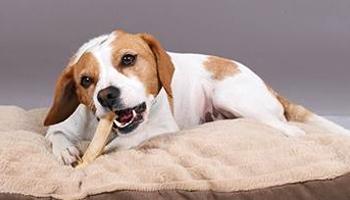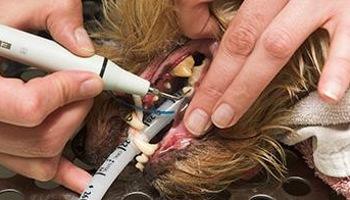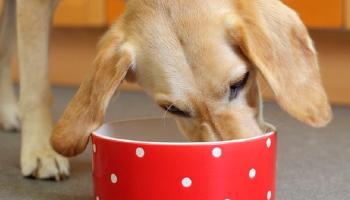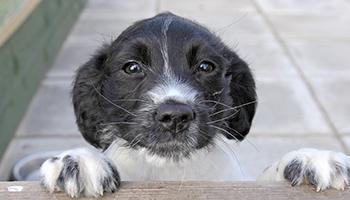Cleaning Your Dogs Teeth - Dog Dental Health | RSPCA - RSPCA
Caring for your dog's teeth
Keeping your dog's teeth clean is important, as ignoring it can lead to plaque build-up and dental problems. Dental disease is very common in dogs, second only to ear infections, and can be extremely uncomfortable - much as it would be for us.
To avoid expensive treatment costs, check and clean your dog's teeth as part of their regular grooming routine.

Maintaining healthy teeth
Here are some tips for keeping your dog's teeth healthy.
- Feed them the right food - some owners favour wet foods for their dog over dry. However, dry dog food may have the added benefit of exercising their chewing muscles and provide a mild cleaning effect on the teeth.
- Every dog is unique, so there's never one diet that will suit all dogs. If you're unsure what works best for your dog, a vet or reputable pet shop will be able to give you more specific advice on the best diet.
- Brush your dog's teeth regularly.
- Dental chews and treats are also a good way of helping to keep your dog's teeth clean.
- Feeding bones is controversial - although raw, meaty bones may be a tasty treat for your dog and do help clean teeth, they can be hazardous. Bones can cause dental fractures with dogs who eat 'energetically', and can cause constipation. Cooked bones are likely to fragment and cause internal damage. Ask your vet for advice first before feeding your dog bones, and supervise them if and when they do eat them.
How to clean your dog's teeth
You should keep brushing your dog's teeth as part of a regular grooming routine.
- Ask your vet first - before you start cleaning your dog's teeth, it's always best to ask your vet to show you the best way to do this. Different breeds show varying jaw alignments and how the teeth meet. Flat-faced dogs, like Pugs and Chihuahuas, have poorly aligned jaws, with crowded or absent teeth, and are therefore more likely to suffer from dental disease.
- Start teeth cleaning when they're a puppy and brush their teeth everyday to get them used to it. If you haven't done this before, gradually introduce it by having your finger near their mouth. Keep doing this and then slowly introduce brushing until this is natural.
- Buy a dog toothpaste - human ones aren't suitable. You can use a special dog toothbrush that goes over your finger to brush their teeth, but if you don't have one then a child-sized toothbrush is fine.
Signs your dog has dental or gum disease
Dental disease can appear quite suddenly, or progress over time and take months.
Make sure you look out for these signs:
- Deposits may build up on the teeth
- Gums will be damaged and bleed
- Smell - if the mouth is infected it will give off a foul smell
- The sensitive root of the tooth may be exposed and painful
- Discoloured teeth that die and fall out
- Your dog may also refuse food, have difficulty eating or leave flecks of blood in their bowls
If your dog has any of these symptoms, please contact your vet.
Fractured teeth
When your dog chews a large piece of solid material such as a large bone or stone, they could fracture their teeth. If they whimper when chewing it, paw at the mouth, ooze blood in their saliva or refuse food, please see your vet immediately.
Dental disease treatment
If you find your dog has dental disease, only carry out treatment under the direction of your vet. Your dog will most likely need sedation or a general anaesthetic to properly examine their mouth. X-rays might also be taken to reveal any abnormalities of the tooth or bone.
If the affected teeth aren't too bad, they would be scaled and polished to remove mineral deposits. With more severe cases, such as fractured or loose teeth, they may need to be removed.
Your dog will likely need anti-inflammatory drugs and antibiotics after surgery. You'll then need ongoing commitment to regular dental care to prevent the disease from coming back.



